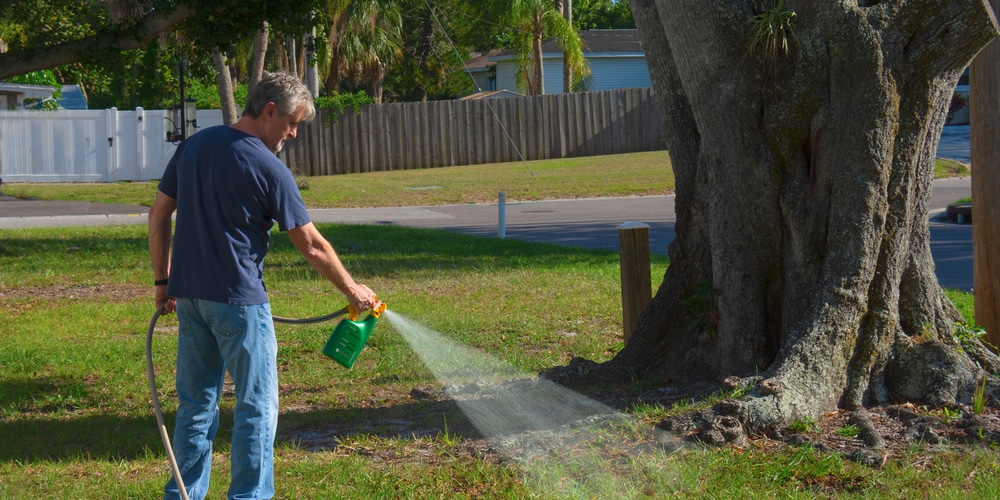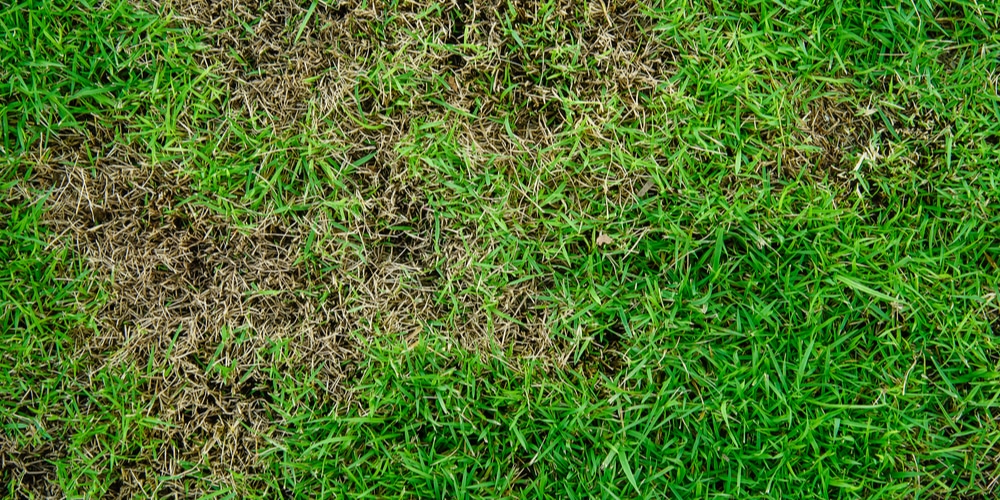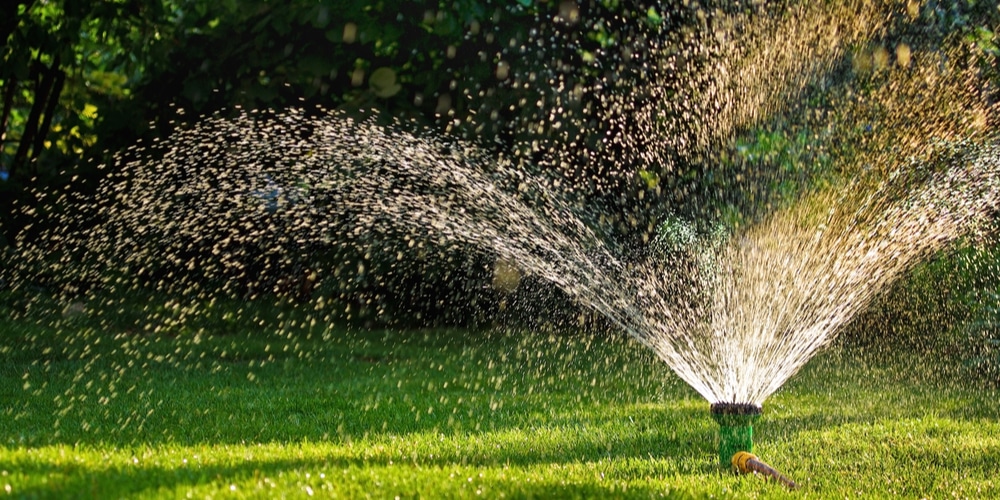If you take pride in creating a nice yard, you’ll probably take care of your lawn by mowing the grass regularly, watering, and aerating. Perhaps you also use weed and feed to help your lawn thrive while keeping weeds at bay. While weed and feed products are effective, there can be too much of a good thing. Overfeeding your lawn with weed and feed can damage your grass and could even kill your lawn.
Overuse of products such as fertilizers, herbicides, and insecticides can change the soil Ph and be detrimental to the health of your grass. Many gardeners choose to use weed and feed as it allows them to provide their lawn with fertilizer and herbicide in one application. This helps to save time and energy, but may not be the best approach for grass and other plants. Let’s look at the symptoms that indicate you’ve used too much weed and feed.
What is Weed and Feed?

Weed and feed products are specifically designed to improve soil nutrients and protect your lawn from weeds at the same time. There are a variety of weed and feed products on the market which are either pre-emergents or post-emergent. The herbicide in pre-emergent weed and feed stops weeds seeds from germinating. These products should be applied in the early spring before weeds start to grow.
Post-emergent herbicides are used in many weed and feed products and these kill weeds which have already started to grow. They can be used throughout the growing season. However, if they are used too often your lawn may suffer from a weed and feed overdose.
Too Much Weed and Feed Symptoms
The first thing you’ll notice if you’ve used too much weed and feed on your lawn is that the grass will become dry and start to discolor, turning yellow or even brown. This is due to the mineral salts in the fertilizer. If you apply an excess of these salts they will build up in the soil and change its pH range, creating an inhospitable environment for grass and plants to grow.
If mineral salts have been allowed to accumulate in the soil these will dry out the ground as the salts will soak up all the available water. The grass will then become dehydrated and start to die. This is commonly known as fertilizer burn and can affect your whole yard or create yellow or brown patches in the grass.
Sometimes a lawn will recover from fertilizer burn, while in other instances the lawn will completely die. The color of the grass will indicate whether or not you’re like to be able to save your lawn. If the grass is yellow it’s likely to recover, whereas if it’s turned brown, there’s less chance of recovery.
How Much Weed and Feed is Too Much?
As each lawn is different, it’s hard to say how much is too much. When determining how much weed and feed to use, you should always read the label and follow the instructions exactly.
You should also consider the ingredients used to manufacture the weed and feed before deciding whether you want to apply it to your lawn. Also, consider the number of weeds growing in your yard; if you don’t have many weeds, you may be able to use a fertilizer that doesn’t contain herbicides and pull the weeds up by hand. Also, use the right product for your yard’s soil type and texture.
What to Do if Your Lawn Suffered from Fertilizer Burn?
It’s essential to act fast if you notice your lawn has started to become discolored. Taking action to improve the condition of your lawn will help to save your grass. The following steps will help you to limit the damage:
Remove Fertilizer granules
If you’ve used granular weed and feed, you’ll be able to remove the fertilizer from your lawn. Use a broom to sweep up all the visible weed and feed and dispose of it safely and carefully.
Water your Lawn
The next thing to do is provide your lawn with plenty of water, as this will help to dilute the weed and feed and allow it to soak deeper into the soil. Turn on your sprinkler and leave it on for a couple of hours. This will prevent your lawn from getting too dry, which is a symptom of fertilizer burn, and will also flush out the mineral salts so that they cannot cause more harm to your lawn. Ensure you give your lawn plenty of water for a week. This will help revitalize the grass.
Give your Lawn Time to Heal
Removing fertilizer and providing your lawn with plenty of water will help restore its health. You’ll need to give your lawn some time to see whether it revitalizes itself or dies completely. Don’t rush to plant new grass seed or lay new sod; your lawn needs time to recover.
Replanting
If your grass has completely died, it’s best to wait until the next growing season to plant a new lawn. If you plant too soon, the weed and feed in the soil will likely affect your new grass too. Next time you use weed and feed, be very careful about how much you use. You may like to use an organic product that will be healthier for your lawn and the environment.
Conclusion: Too Much Weed and Feed Symptoms
If you give your lawn a lot of care and attention, it will thrive. Maintaining your lawn isn’t tricky, but sometimes using too much weed and feed can ruin all your hard work and kill your lawn. When applying weed and feed, always read the instructions and follow them carefully. Fertilizers and herbicides are only helpful products when used correctly. To avoid a dead, barren yard, you may like to choose an organic fertilizer or weed and feed product.
Lawns that have been given too much weed and feed will suffer from fertilizer burn and turn yellow or brown and eventually die. If your lawn is suffering you can remove fertilizer granules, give your grass plenty of water, and in time it will likely recover. Eventually, the symptoms of too much weed and feed will go away.

